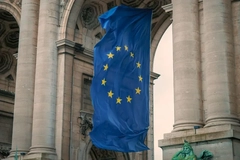Metsä Board study finds paperboards cut half of carbon footprint for beauty care packaging

Packaging company Metsä Board has released study results demonstrating that optimizing the selection of paperboard materials can substantially reduce the carbon footprint of beauty care and cosmetic packaging. This strategic selection plays a key role in lowering emissions during packaging production, from raw material extraction through manufacturing to final disposal.
Verified by the IVL Swedish Environmental Research Institute, the assessment study demonstrated that switching to Metsä Board’s fresh fiber paperboard could lower the carbon footprint of packaging by over 50% compared to solid bleached board. In particular, paperboard materials selection during this stage can help beauty companies lower Scope 3 emissions, which are those produced in the product’s lifecycle that typically fall outside of beauty brands’ control.
Anne Uusitalo, product safety and sustainability director at Metsä Board, tells Packaging Insights: “Big brand owners have set themselves ambitious sustainability targets to reduce the CO2 emissions from their operations to mitigate climate change. Paying attention to and choosing packaging materials with lower carbon footprint and environmental impacts to pack their products in helps them to reach their sustainability goals.”
“Metsä Board’s lightweight paperboards can provide opportunities to reduce the carbon footprint of packaging. It’s essential that we offer brands insights based on verified calculations to make impactful decisions.”
.jpg) Anne Uusitalo, product safety and sustainability director at Metsä Board.Enhancing sustainability
Anne Uusitalo, product safety and sustainability director at Metsä Board.Enhancing sustainability
The Metsä-funded study found that replacing existing folding box boards with Metsä Board’s alternative can reduce the carbon footprint by at least 40%. According to the company, these reductions are primarily attributed to the lightweight nature of its fresh fiber paperboards, which maintain durability and functionality.
“Optimizing a customer’s packaging material with our fresh fiber paperboards offers them a tangible way forward to achieve their sustainability goals without compromising on performance or quality,” says Uusitalo.
“We have an ambitious target of fossil-free mills by the end of 2030, so there’s possibilities for further carbon footprint reductions. Currently, about 90% of the energy our mills use is already fossil-free.”
Last month, Metsä Board launched QR codes on its delivery packaging materials. The QR codes make recycling easier by providing clear and easy information about the process for consumers to understand.












